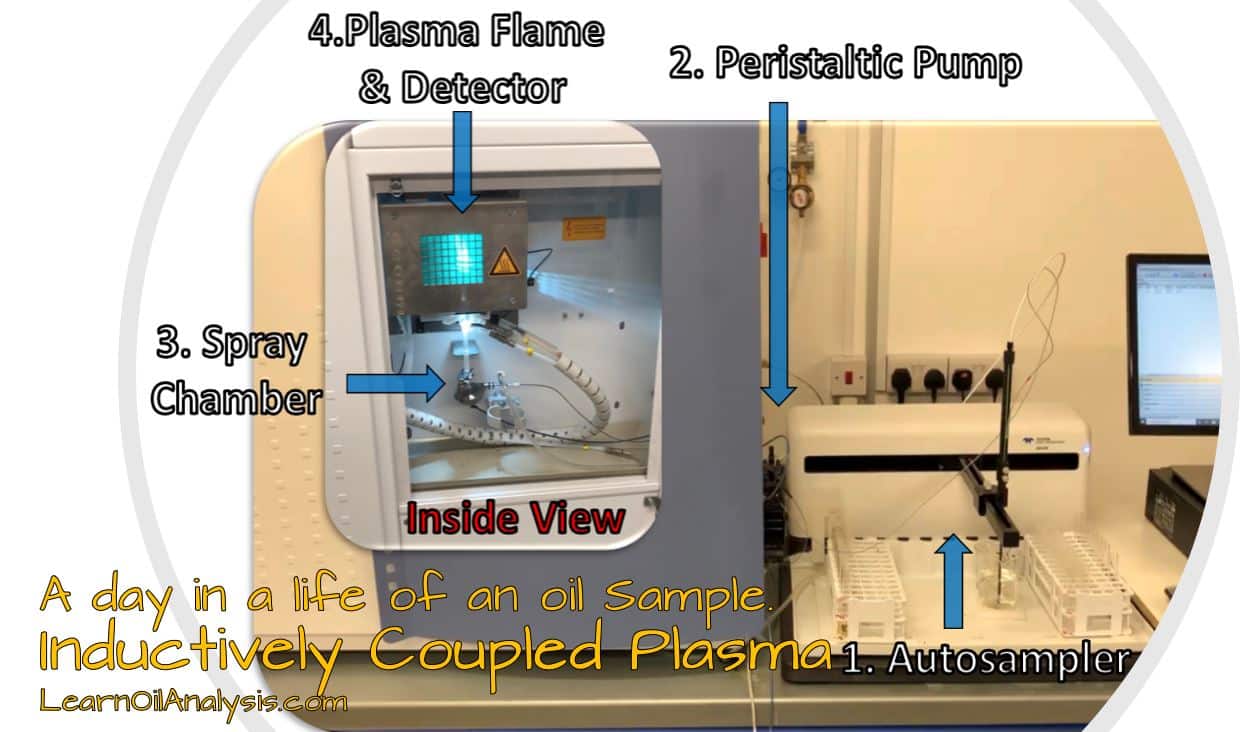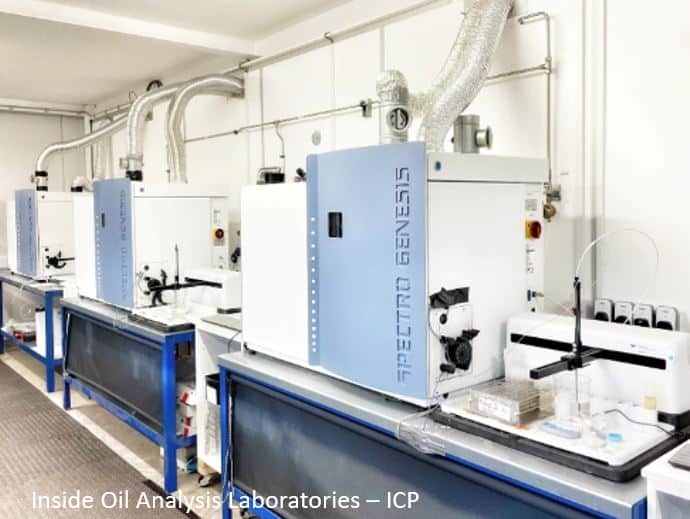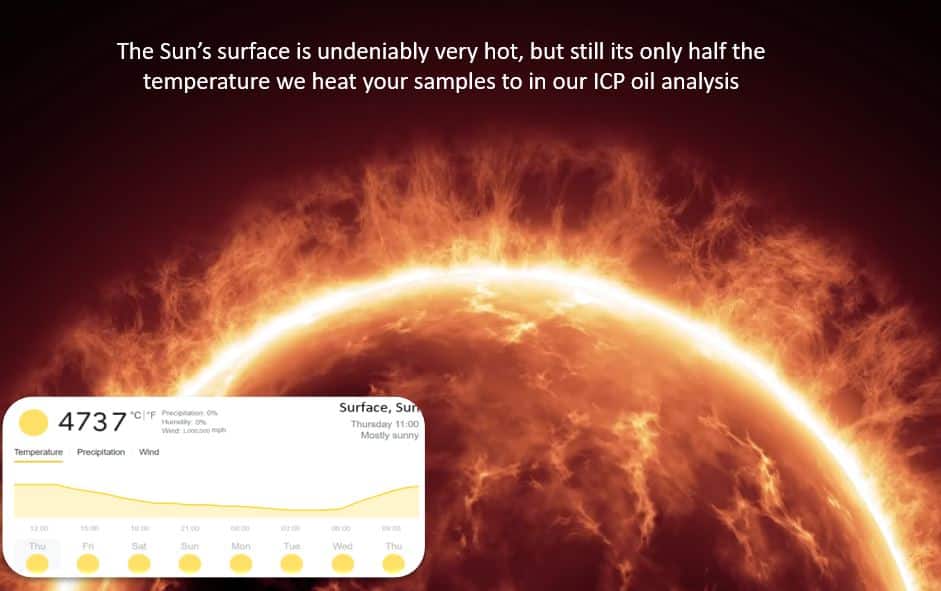Have you ever wondered what happens to your oil after you’ve sent it to our laboratory? In this blog series, we will be discussing some of the tests your oil may be put through and how they give us an insight into the health of your equipment.
A Day In The Life Of An Oil Sample.
Inductively Coupled Plasma Optical Emission Spectroscopy (ICP-OES).
Big in name and big in nature, the ICP is one of the most important tests a sample will take in the laboratory, producing a wealth of data about the elements in your oil.
How it works.
Firstly, a small sample of oil is taken from the bottle and added to a solvent usually white spirits, the same stuff you clean your paintbrushes with, although some mistranslations from English to other languages and back again in textbooks often call this solvent kerosene. The ICP vaporises the sample in a nebuliser and sprays it through a plasma (flame) that is twice as hot as the sun’s surface temperature. As the sample particles enter the flame, they get very hot and the individual atoms get very excited by all this energy. When they leave the flame, they release this energy as light and a detector looks for the unique signature wavelength of each element. This is similar to how you put different metals in a flame at school they glow in different colours. Since the amount of light released is related to the concentration of each element present, the lab can determine how much of each element is present in a sample. A normal ICP test can only detect particles below 5 microns in a sample (the wear particles that matter are all above 15 microns), but our exclusive LubeWear ICP analysis gives more accurate data when looking for larger particles (see below for further information).
Our ICPs aren’t restricted to just oil, they can also test, fuel, AdBlue, coolant and grease. If you already send us these samples from your equipment they’ll also be tested on an ICP. If you’re not sending us these samples, now is a great time to talk to a member of our team about expanding your testing program and all the benefits it will reap!
LubeWear Analysis.
LubeWear analysis is an award-winning method developed and used exclusively by Oil Analysis Laboratories. Traditional ICP oil analysis can only detect particles below 5 microns; to put this into perspective a human hair is 80 microns, meaning if there are any particles visible to the naked eye in your sample, an ICP can’t detect them. This is worrying as any large particles in your oil are what will be causing the most amount of damage to your equipment but cannot be detected and analysed by the testing done by most laboratories. In 2018, we developed LubeWear after years of research to rectify this issue. LubeWear testing is able to detect all particles in a sample, including the ones over 5 microns. We strongly believe in offering the best service and quality of data possible to all our customers, therefore, LubeWear analysis comes as standard with every sample without any extra cost to you.
What does it tell us?
LubeWear and traditional ICP testing detect the levels of over 20 elements in a sample and the data produced is collated and sent to our team of diagnosticians for analysis. They look through this information to see whether the amounts of each element found to fall into normal or abnormal limits for the type of oil and the ratio between normal and abnormally sized particles. The diagnosticians look at this information alongside the data from other tests to conclude the condition of the oil and any effects this may be having on your equipment. If any element levels are found to be abnormal, this is written into the report produced with an explanation for why this could be occurring and any corrective actions that may need to be taken to protect your equipment e.g., abnormal levels of aluminium in an engine oil could indicate piston wear and a solution could be to inspect the condition of your air filters.
If you’re interested in learning more about oil analysis, press the contact button below to contact a member of the team or as a bonus watch a video summary below that delves into more detail on ICP




